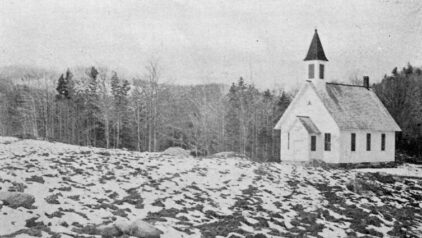Official Military Personnel Files: A Genealogist’s Guide
- By admin


You’re researching your great-grandfather, a supposed WWI veteran, but you lack proof of his service. You know Official Military Personnel Files (OMPFs) exist, but how do you access them?
You’re so close to confirming your great-grandfather’s military service, a vital part of your family history. But OMPFs are locked behind a confusing system. Requests can take forever, files might be incomplete due to fires, and the sheer volume of information is overwhelming.
Below, we’ll explain how to access and work with OMPFs so you can confidently research your ancestor’s service and bring their story to light.
» Browse millions of military records and find your ancestor’s OMPF
What are OMPF Records?
An Official Military Personnel File (OMPF) is a record of a veteran’s service history. It aims to create a complete record for each service member and can contain a lot of information.
OMPFs are different for each branch of the military and stored in different locations. If a veteran left the U.S. Armed Forces between 1960 and before October 2002. The exact year depends on the branch of service.
» Learn more about military wars and decorations
What’s in an OMPF file?
An OMPF contains a wide range of information about a service member’s military career. This includes enlistment and service details like when and how they joined, their rank, and duty stations. It also covers health and insurance information such as medical records and insurance.
Additionally, the OMPF includes training and performance records, such as training, qualifications, awards, and performance evaluations. It may also include information related to any disciplinary actions taken, general administrative notes, and details about their discharge or retirement.
The information in an OMPF can help focus your research by understanding what’s already known so you can decide where to look next. You can also use it to identify what further information to seek out and what specific records to request from archives or record-keeping centers.
» Find out more about different military records in the U.S.
Resources for researching OMPFs
There are several key resources for accessing Official Military Personnel Files (OMPFs) and other military records.
- The National Personnel Records Center (NPRC): NRPC is a part of the National Archives and a main source for OMPFs [1]. The NPRC holds records from all service branches for veterans discharged less than 62 years ago. The information in these records can be invaluable to researchers and genealogists.
- The Freedom of Information Act (FOIA): FOIA, passed in 1967, allows citizens to request files from most federal agencies. This can be useful for finding less common records, such as those from the Armed Forces Retirement Home or the Department of Veterans Affairs [2].
- milConnect: This Department of Defense website offers access to scanned copies of OMPF documents for more recent service members [3,4].
- MyHeritage: MyHeritage has a powerful search engine and a large collection of military records. It can be a great supplement to OMPF research, offering information like DNA results, family stories, and photo collections that complement OMPF details.
How to access OMPFs
When requesting military records, including OMPFs, it’s important to follow certain rules and best practices. This ensures that requests are appropriate and successful.
1. Determine the type of record
The first thing to determine is whether the records are “archival” or “non-archival.” This depends on when the veteran left the military.
- Archival records: Records become archival 62 years after the service member’s separation and are open to the public [5].
- Non-archival records: Records with a discharge date in 1962 or later are considered non-archival. These records have access restrictions. Usually, only the veteran or their next-of-kin can access them. The general public might get limited information, but it’s not guaranteed.
2. Fill out the form
To request records, you need to fill out Standard Form 180 (SF-180) [6]. If you’re requesting non-archival records, you may need to prove your relationship to the veteran using an ID or a driver’s license. You’ll also need proof of the service member’s death. This could be a death certificate, a newspaper article, a coroner’s report, or a DD Form 1300.
When researching recently deceased individuals, it’s crucial to be mindful of privacy laws and the impact on surviving relatives. Always respect the wishes of living relatives. Treat the information of deceased service members with dignity and respect.
» Learn more about overseas military burials
Challenges when accessing OMPFs
If you’re researching OMPFs affected by the 1973 fire at the NRPC, auxiliary records can be a valuable resource. These records can help fill in gaps when primary records are missing.
Examples of auxiliary records:
- Army: Morning reports, unit rosters, and officer pay cards.
- Air Force: Morning reports.
- Navy: Muster rolls.
- Other: Records from the Surgeon General, and VA Index Cards for World War I and World War II.
Restored records
In some cases, burned records have been restored. These are kept in the “B Registry” (Burned File) at the NPRC’s St. Louis Preservation Branch. This collection currently contains 6.5 million files.
» Find out everything there is to know about WWI records
OMPFs and the military-to-civilian transition
Civilian life information
OMPFs generally don’t contain information about a service member’s civilian life. At most, you might find details about where they processed out of the military or where their personal belongings were shipped.
The National Archives website does not mention any information on civilian life being included in these records. To learn about the transition from military to civilian life, you should look beyond OMPFs. One valuable resource is the Journal of Veteran Studies.
The research from Morris and Hanna includes many first-person accounts. Oral history libraries are also collecting veterans’ stories about transitioning to civilian life. These collections can be valuable resources for researchers [7].
» Learn more about US World War II draft records and how to research them
Classified military information
OMPFs also don’t typically include details about specific battles or military engagements. According to FOIA.gov, there are many exemptions to what information can be released, including:
- Information classified under Executive Order
- Trade secrets
- Information protected by attorney-client privilege
If a service member’s work was classified, it’s likely that information wouldn’t be available in their OMPF. But, new documents are declassified regularly.The Archives Library Information Center (ALIC) now holds a collection of declassified documents, which may be helpful if you’re studying sensitive military service.
» Learn to trace your ancestor who served in the Civil War
Bringing your ancestor’s service to light
By mastering the contents of this guide, you will have transformed from a novice researcher into a confident navigator of OMPFs. You’ll be equipped to not just find names and dates but to reconstruct a vibrant and detailed picture of your ancestor’s military experience.
You will have conquered the complexities of OMPFs, gaining access to a treasure trove of information that brings your family history to life. The stories held within these files are waiting to be rediscovered.
Armed with the knowledge and strategies provided here, you are now ready to embark on this exciting journey, ensuring that your ancestor’s service and sacrifice are remembered and honored for generations to come.
» Find your ancestor’s OMPF: Access a military record database









